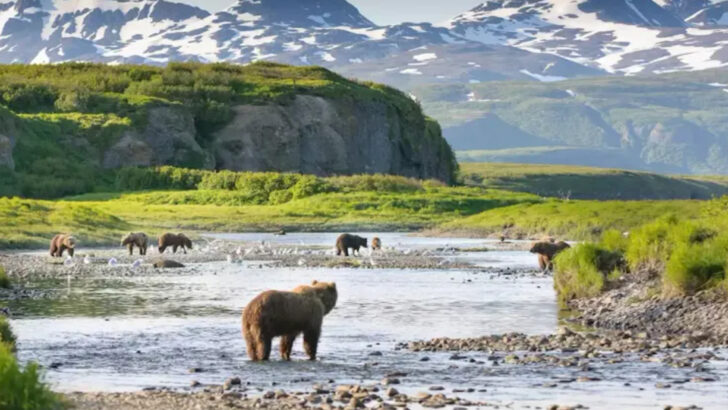Watching a bear in the wild is nothing short of electrifying. These massive, powerful creatures roam the wilds of North America, and witnessing them in their natural habitat is an experience like no other. From their graceful movements to their raw strength, bears demand attention—and they’ll leave you in awe.
North America is a playground for these majestic animals, with diverse environments that provide the perfect backdrop for bear watching. Whether you’re standing on the shores of Alaska or deep in the forests of Canada, there’s no shortage of incredible places to spot these wild giants.
Are you ready to track down the best bear-viewing spots across the continent? From rugged mountain ranges to misty shorelines, we’ve got 30 places where you can get an up-close look at one of nature’s most awe-inspiring creatures. Grab your binoculars—adventure awaits!
Katmai National Park, Alaska
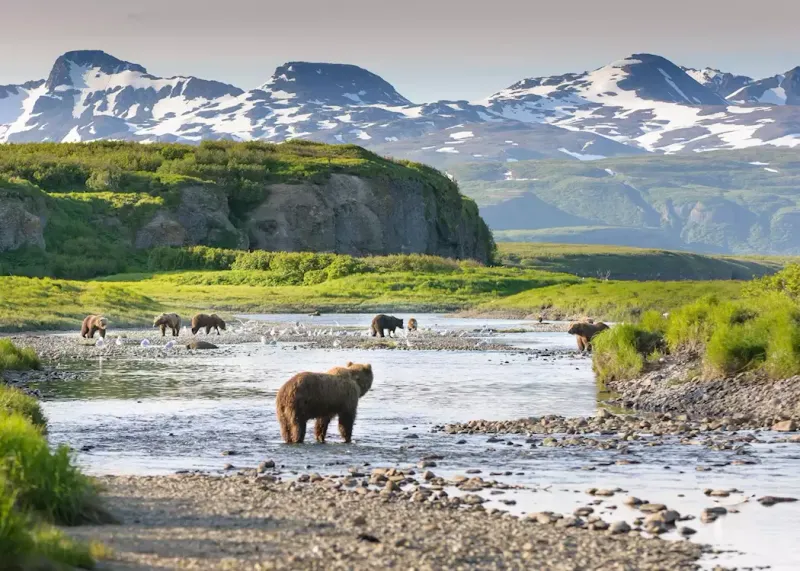
Katmai National Park offers an unparalleled bear watching experience, especially at Brooks Falls. During the salmon run, brown bears congregate here, showcasing their fishing skills.
The sight of bears catching salmon mid-air is mesmerizing and draws visitors from around the world. This park provides a natural theater where bears take center stage, and photographers find endless opportunities.
Katmai’s isolation enhances the wilderness experience, allowing visitors to connect deeply with nature. Guided tours ensure safety while enriching the experience with insights into the bears’ behavior and ecology.
Great Bear Rainforest, British Columbia
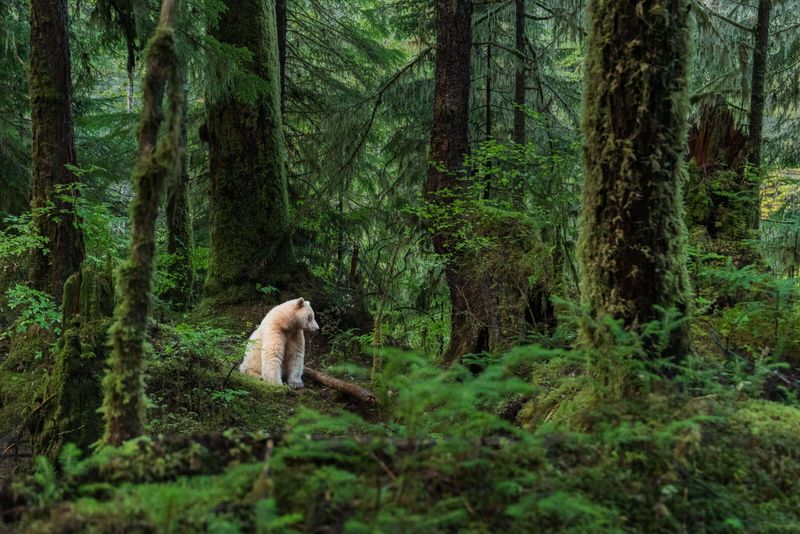
The Great Bear Rainforest is home to the elusive Spirit Bear, a rare white bear that captivates visitors with its uniqueness. This ancient forest stretches along the central coast of British Columbia, offering a pristine wilderness.
Exploring this area, one might spot black bears fishing in the streams or the Spirit Bear wandering the dense woodlands. Eco-tours led by knowledgeable guides provide insights into the ecosystem and the importance of conservation.
The rainforest’s biodiversity is unmatched, making it not only a haven for bears but also for nature enthusiasts seeking solitude and adventure.
Yellowstone National Park, Wyoming
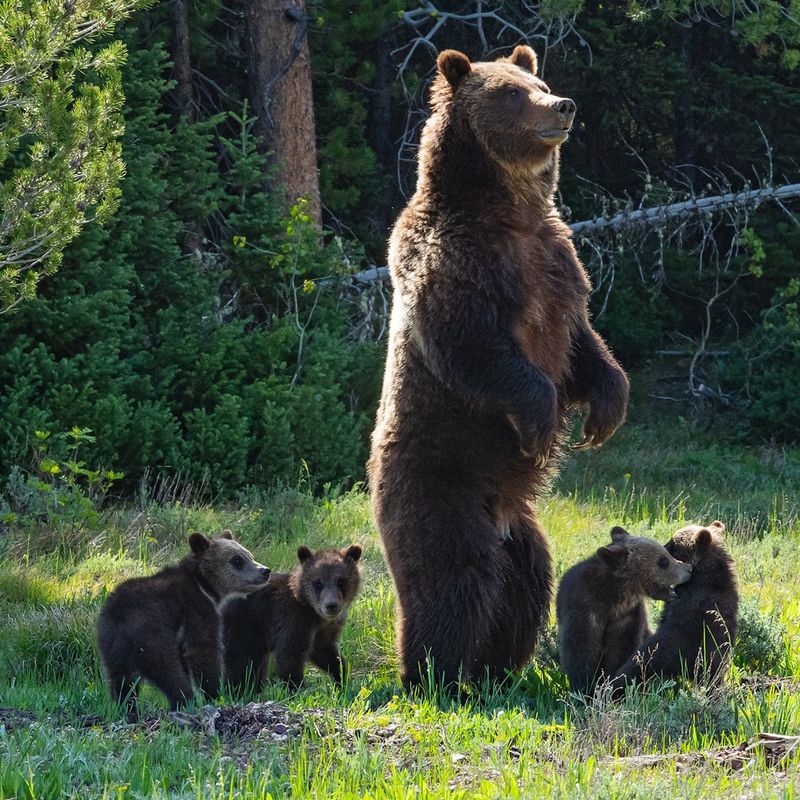
Yellowstone National Park is synonymous with wildlife adventure, where both grizzly and black bears thrive. The park’s vast landscapes offer diverse habitats, from lush meadows to dense forests.
Spotting a bear ambling through open areas or near water bodies is a thrilling part of the Yellowstone experience. The park’s geothermal features add an extra dimension to the backdrop of bear sightings.
Seasonal factors influence bear activity, and ranger-led programs educate visitors on respecting wildlife and understanding the delicate balance of this unique ecosystem.
Denali National Park, Alaska
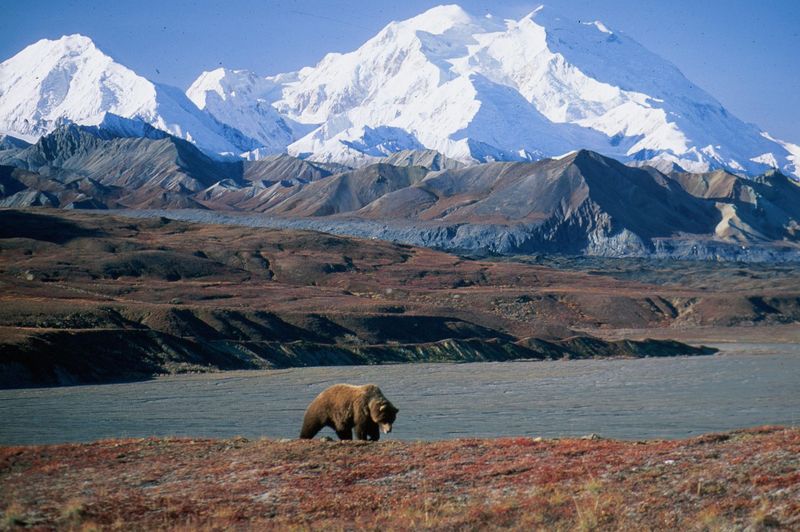
Denali National Park, with its stunning Alaskan landscapes, provides a majestic setting for observing brown bears. The park covers over six million acres of wild terrain, offering bears ample space to roam.
Visitors often see bears from the park’s shuttle buses, which traverse through bear habitats, allowing for safe and respectful wildlife viewing. Denali’s open landscapes make it easier to spot bears from a distance.
This park emphasizes minimal human intrusion, ensuring that nature remains undisturbed while providing unforgettable wildlife experiences.
Glacier National Park, Montana
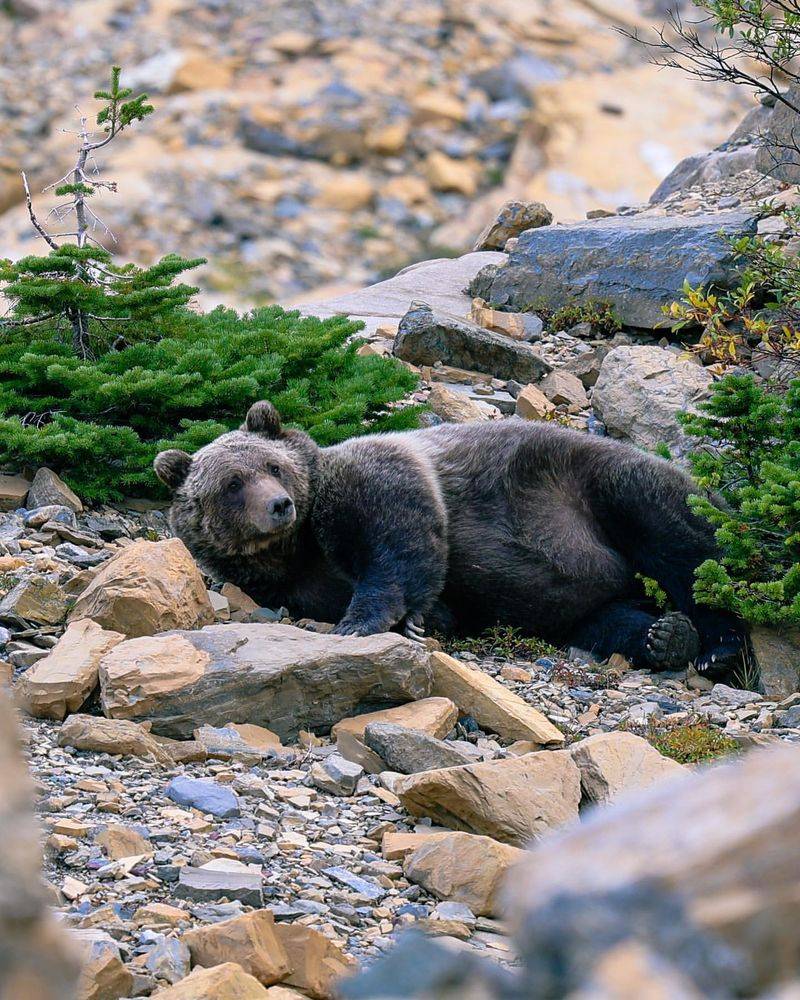
Glacier National Park’s rugged beauty sets the stage for an extraordinary bear watching adventure. Both black and grizzly bears inhabit this park, utilizing its diverse landscapes.
From forested trails to alpine meadows, bears are often seen foraging or casually exploring their territory. The park’s scenic views of mountains and glaciers add to the charm of bear encounters.
To enhance safety and enjoyment, visitors are encouraged to maintain a distance and use binoculars or long lenses for viewing. Ranger-led talks offer education on the vital role of bears in the ecosystem.
Anan Wildlife Observatory, Alaska
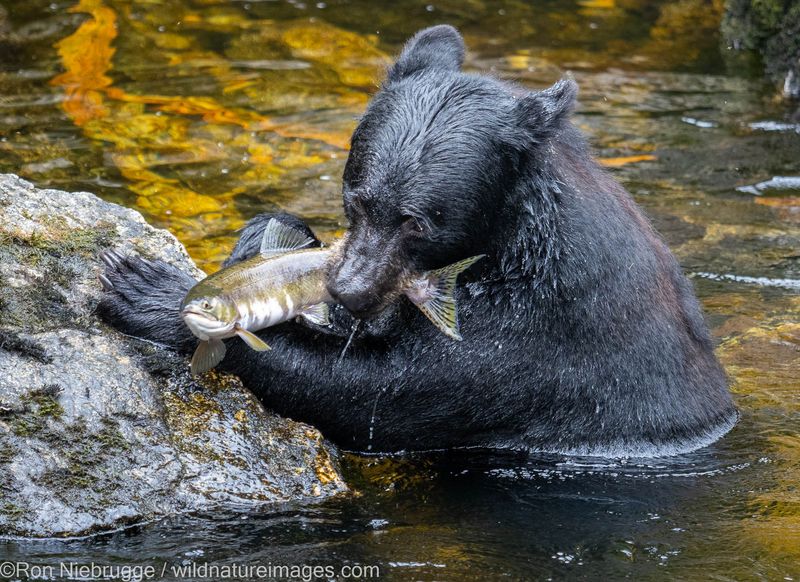
Anan Wildlife Observatory is a prime location for observing black bears, particularly during the salmon run. Located in the Tongass National Forest, this spot is renowned for its dense bear population.
The observatory provides a platform for safe viewing, where visitors can watch bears fish in the creek, showcasing their natural hunting skills. The lush surroundings of the forest enhance the experience, offering a glimpse into the bears’ everyday life.
Wildlife enthusiasts appreciate the seclusion of Anan, making it an ideal destination for those seeking an intimate bear watching experience.
Lake Clark National Park, Alaska
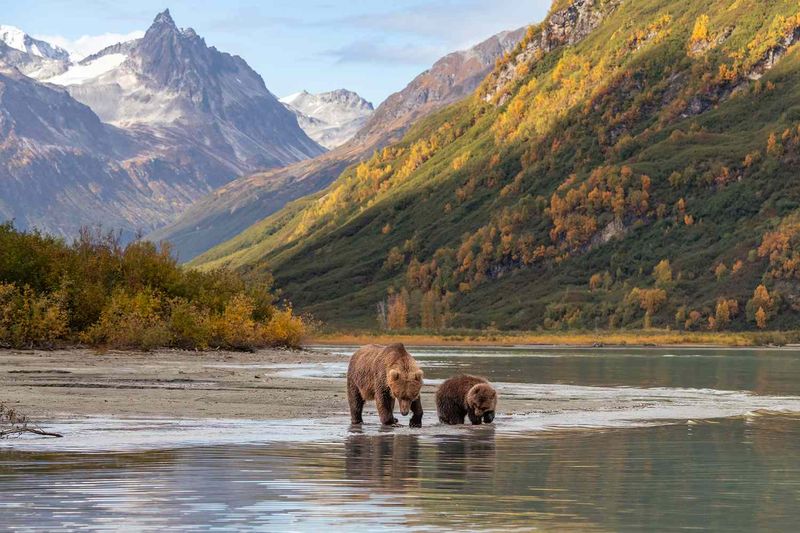
Lake Clark National Park is known for its spectacular setting and abundant bear population. Coastal brown bears frequent the park’s shores, especially during the salmon spawning season.
Observing bears in this pristine environment is a remarkable experience, with opportunities for close-up viewing from guided tours. The park’s dramatic landscapes, including mountains and lakes, provide a stunning backdrop.
Engaging with professional guides enhances understanding of bear behaviors and ensures safety. This park is a hidden gem for those eager to witness bears amidst Alaska’s natural splendor.
Knight Inlet, British Columbia
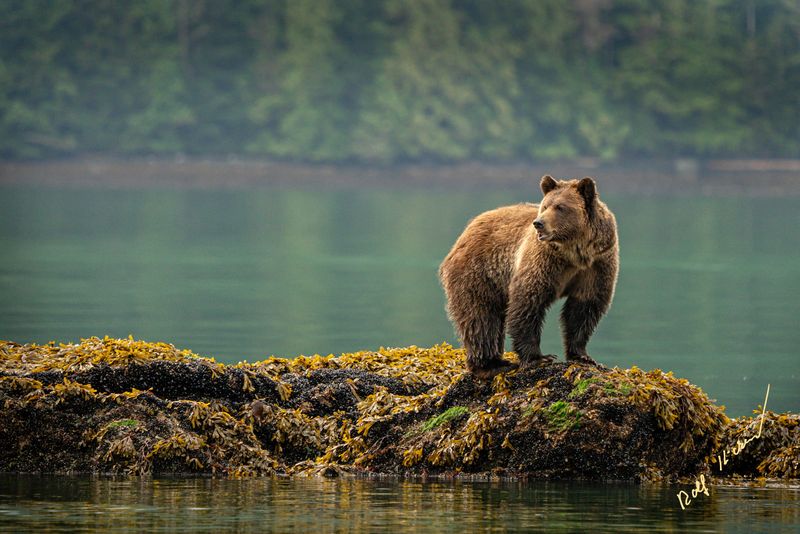
Knight Inlet is a renowned fjord in British Columbia, offering a prime setting for observing grizzly bears. These majestic creatures are often seen fishing in the rivers during the salmon run.
The inlet’s serene waters and surrounding mountains create a picturesque environment, ideal for wildlife photography and observation. Visitors can take guided boat tours to get closer to the action while maintaining safety.
The rich biodiversity of Knight Inlet extends beyond bears, making it a captivating destination for nature lovers and photographers seeking dynamic landscapes.
Admiralty Island, Alaska
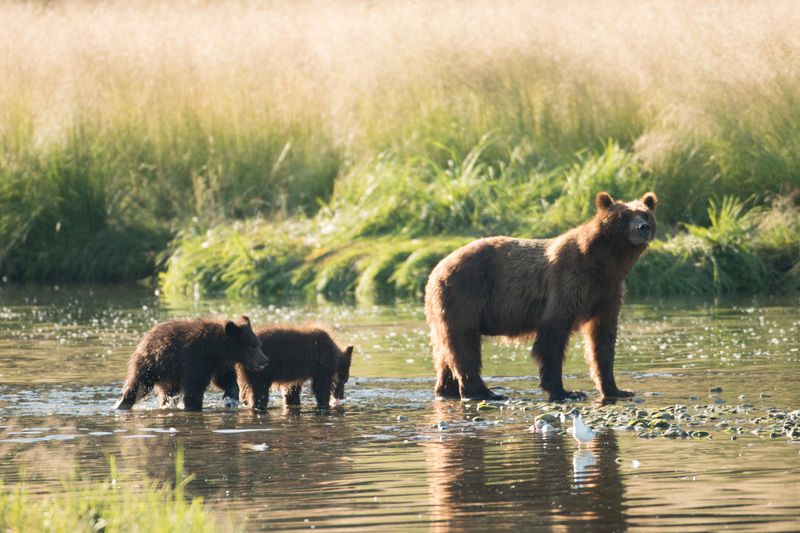
Admiralty Island is often referred to as the “Fortress of the Bears,” hosting one of the densest brown bear populations in the world. Pack Creek offers a unique venue to observe these animals in their natural habitat.
The island’s untouched wilderness provides a backdrop where bears thrive, free from excessive human interference. Guided tours allow visitors to witness bear behaviors from a safe distance, enhancing appreciation for these creatures.
Admiralty Island’s commitment to conservation ensures that both visitors and bears coexist harmoniously in this celebrated wildlife haven.
Kodiak Island, Alaska
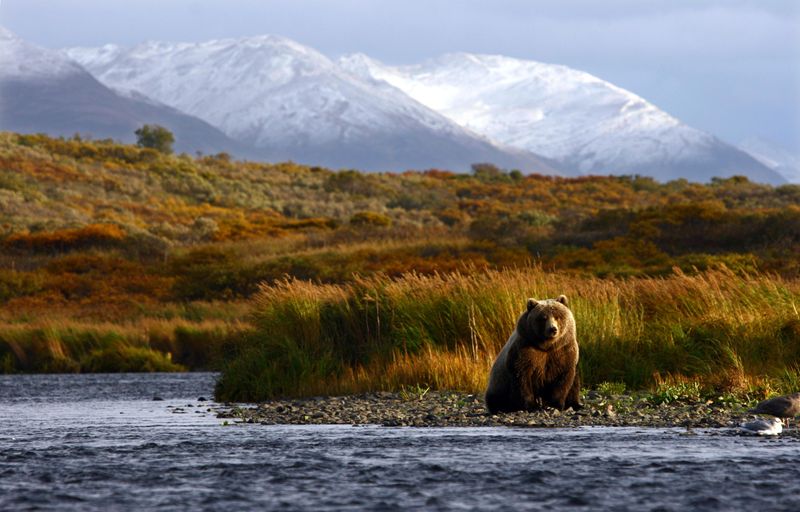
Kodiak Island is synonymous with the Kodiak bear, one of the largest bear species. This island provides a rugged and untouched habitat where these bears prosper.
The island’s diverse environments, from coastal shores to forested interiors, offer varied bear watching opportunities. Guided tours help protect both visitors and wildlife, providing insights into the island’s unique biodiversity.
Kodiak bears’ sheer size and presence make encounters unforgettable, drawing wildlife enthusiasts and researchers alike to this remote Alaskan destination.
Alaska Peninsula National Wildlife Refuge, Alaska
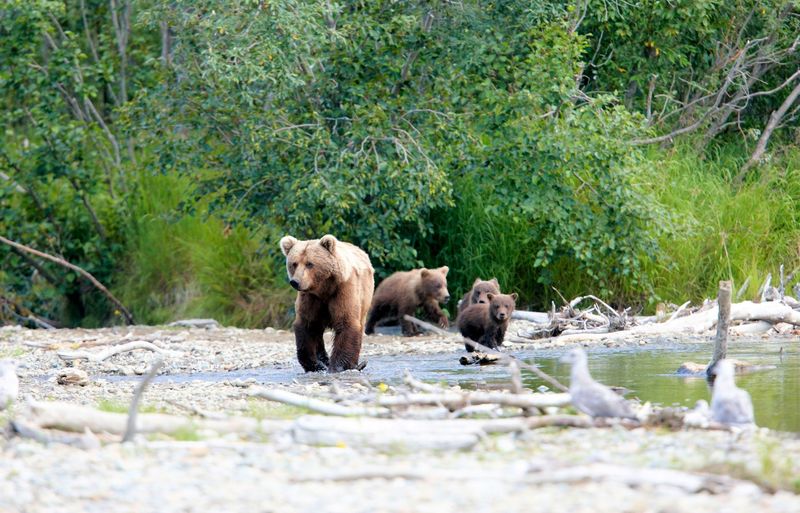
The Alaska Peninsula National Wildlife Refuge is a sanctuary for brown bears, offering vast tundra and mountainous landscapes. It’s an ideal location for observing bears in their natural environment.
Visitors can witness bears fishing in rivers or wandering through the tundra, surrounded by the dramatic scenery of volcanic mountains. This refuge emphasizes the importance of preserving natural habitats.
Guided tours provide educational insights into bear ecology and the broader ecosystem, ensuring a comprehensive wildlife experience for all nature enthusiasts.
Tweedsmuir Provincial Park, British Columbia
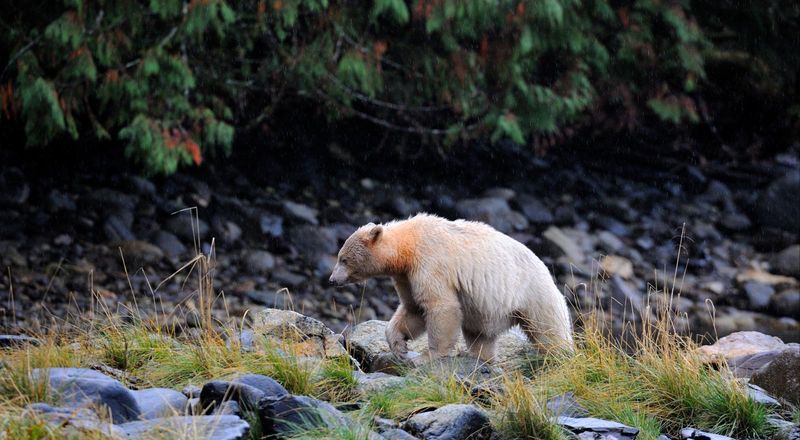
Tweedsmuir Provincial Park, located in the heart of British Columbia, offers rich opportunities for grizzly bear sightings. The Bella Coola Valley is particularly known for its bear population.
During the salmon run, grizzly bears are frequently seen along the rivers, making it a hotspot for wildlife enthusiasts. The autumn backdrop enhances the scenic beauty of bear encounters.
Visitors can take advantage of viewing platforms and guided tours to safely observe these magnificent creatures. The park’s commitment to conservation enriches the overall bear watching experience.
Kenai Fjords National Park, Alaska
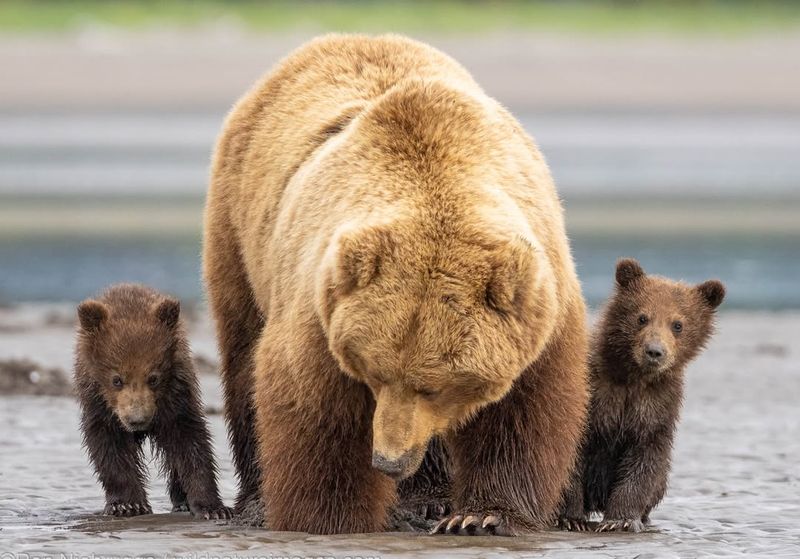
Kenai Fjords National Park offers a unique combination of coastal scenery and wildlife, making it an exciting destination for bear watching. Black bears are a common sight along the rocky shores.
The park’s breathtaking landscapes include glaciers and fjords, providing a dramatic setting for wildlife observation. Boat tours offer close-up encounters with bears and other marine wildlife.
Kenai Fjords emphasizes education and conservation, with guided tours that highlight the importance of preserving this unique ecosystem for future generations.
Algonquin Provincial Park, Ontario
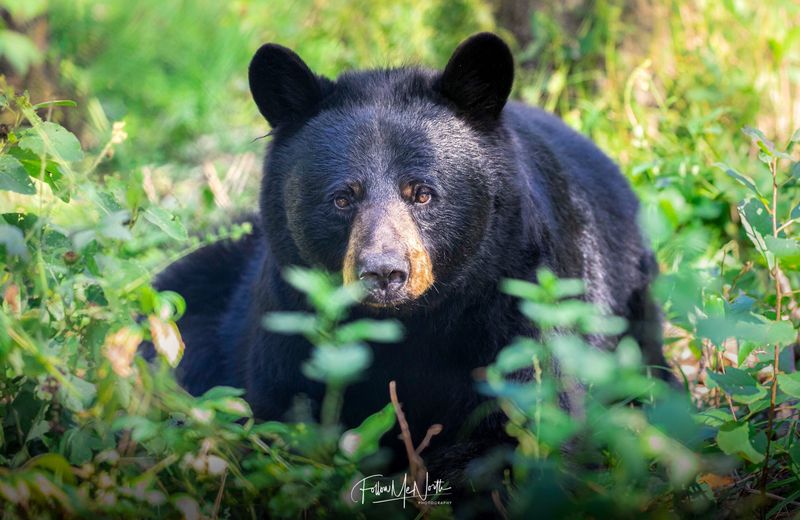
Algonquin Provincial Park in Ontario is a prime destination for bear watching, particularly during the autumn months when the landscape is ablaze with color. The park’s sprawling forests and pristine lakes create a picturesque setting for observing brown bears.
Bears can often be spotted near the water, fishing for salmon during migration season. The park offers guided tours and canoe excursions, providing unique perspectives on bear behavior and habitat.
When visiting Algonquin, be sure to take advantage of the educational programs offered, which enhance understanding and appreciation of these majestic animals. Respect for nature and adherence to park rules ensure a safe and rewarding experience.
Zion National Park, Utah
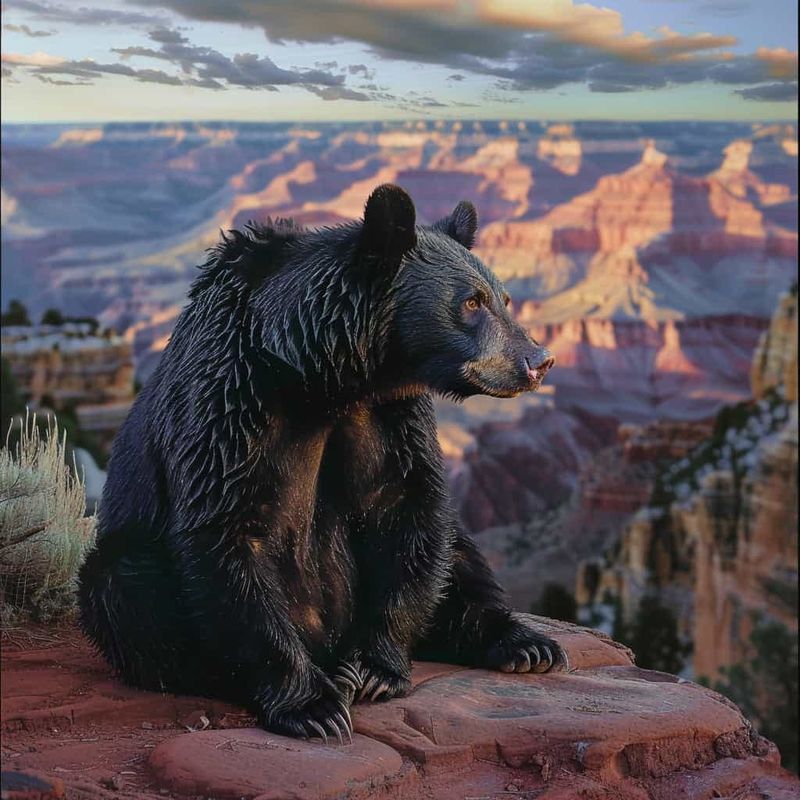
Zion National Park is a breathtaking landscape of red rock formations and lush valleys, home to a small population of black bears. Spotting a bear here is a rare treat, adding to the park’s allure.
Bears are often seen near water sources or shaded areas, especially during warmer months. The park’s diverse terrain supports various wildlife, making every visit unique.
Ranger-led programs and information centers provide valuable insights into the park’s wildlife and the role bears play in its ecosystem, enhancing the visitor experience.
Chugach National Forest, Alaska
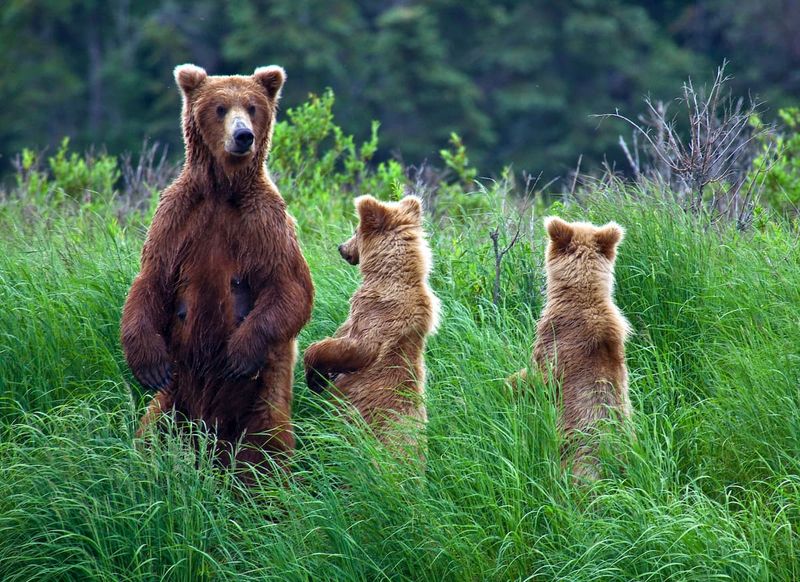
Chugach National Forest, with its expansive landscapes, is a prime location for observing brown bears in the wild. This vast forest offers rivers and valleys where bears are frequently seen fishing.
The forest’s remoteness ensures a peaceful environment, ideal for immersing oneself in nature. Guided tours provide a safe and informative way to experience bear watching.
The natural beauty of Chugach, with its snowy peaks and lush forests, offers a picturesque setting for observing bears and understanding their role in the ecosystem.
Tongass National Forest, Alaska
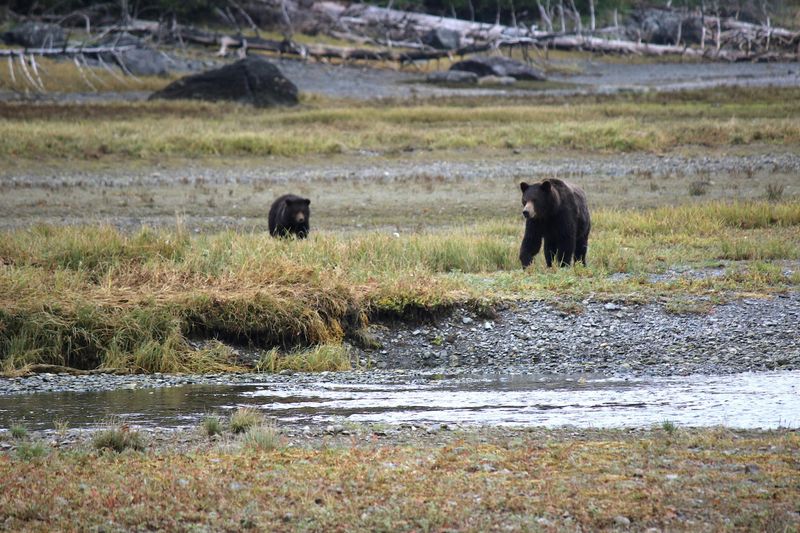
Tongass National Forest, the largest national forest in the U.S., is rich with wildlife, including a healthy population of black bears. The forest’s dense vegetation offers a natural habitat where bears thrive.
Visitors can explore numerous trails and streams where bears are often spotted foraging. The forest’s commitment to conservation ensures that the wildlife and natural beauty are preserved.
Guided tours and ranger programs enhance understanding of the ecosystem, providing a deeper appreciation for the intricate balance of nature found in Tongass.
Wrangell-St. Elias National Park, Alaska
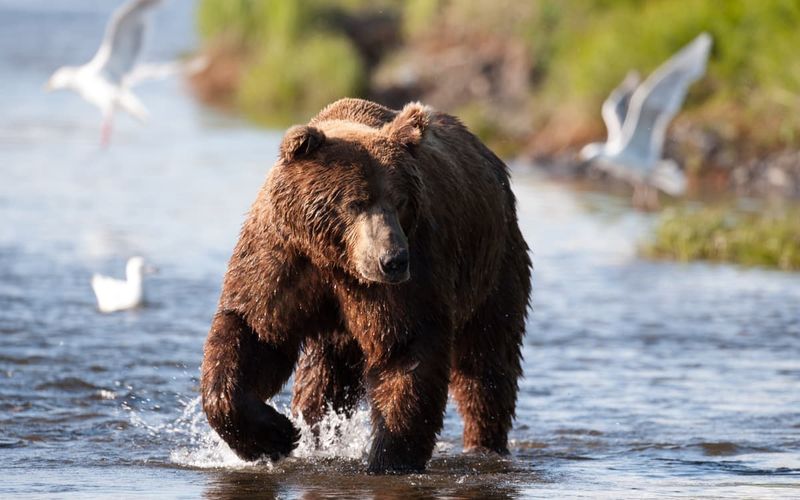
Wrangell-St. Elias National Park offers an expansive wilderness where grizzly bears can be observed in their natural setting. The park’s vast tundra and rugged mountains provide an awe-inspiring backdrop.
Bear sightings are common along riverbanks and open fields, especially during the salmon spawning season. The park’s size allows for a truly wild experience, with minimal human intrusion.
Visitors can join guided tours or self-explore, always keeping a respectful distance. This park emphasizes the importance of conservation, providing an unspoiled environment for both bears and adventurers.
North Cascades National Park, Washington
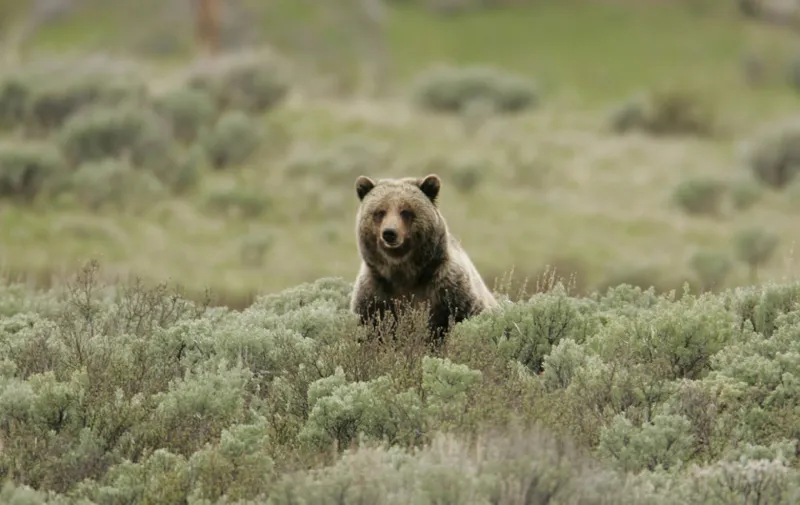
North Cascades National Park is a rugged wilderness offering a haven for black bears. The park’s diverse ecosystems support a rich variety of wildlife.
Bears are often seen in meadows and near water bodies, especially during the berry season when they forage actively. The dramatic mountain scenery adds to the allure of bear encounters.
Visitors are encouraged to explore the park’s trails and take advantage of ranger-led programs to learn more about the bears and their habitat, ensuring a safe and informative experience.
Banff National Park, Alberta
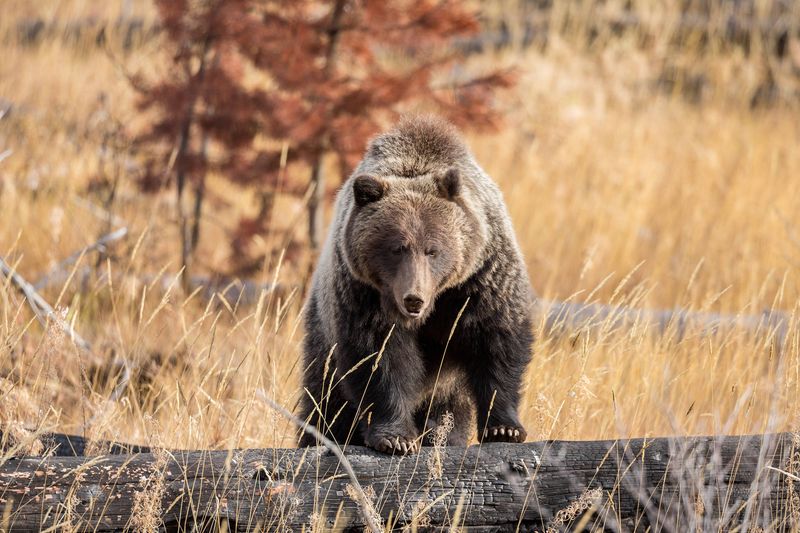
Banff National Park, located in the Canadian Rockies, is renowned for its stunning landscapes and wildlife, including grizzly bears. The park’s meadows and forests provide ideal habitats for these majestic animals.
Bear sightings are common along hiking trails and roadways, especially during the spring and fall when they are most active. The park’s commitment to conservation ensures that both visitors and wildlife coexist peacefully.
Educational programs and guided tours offer insights into bear behavior and safety, enriching the visitor experience in this breathtaking natural setting.
Jasper National Park, Alberta
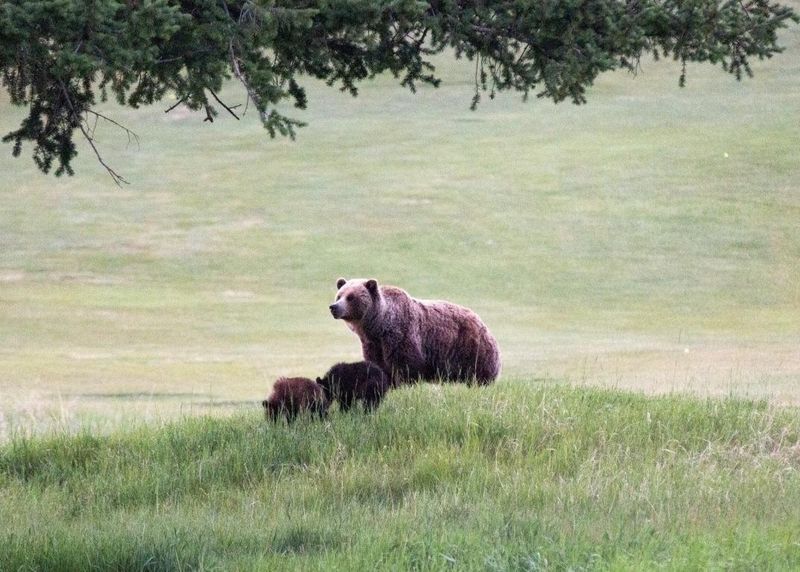
Jasper National Park is a vast wilderness in the Canadian Rockies, home to a healthy population of black bears. The park’s diverse landscapes offer numerous opportunities for bear sightings.
Bears are often seen near lakes and riverbanks, foraging for food in the vibrant ecosystem. The stunning backdrop of snow-capped mountains and turquoise lakes enhances every wildlife encounter.
Visitors can join guided tours or explore on their own, always maintaining a safe distance. Jasper’s dedication to preserving natural habitats ensures a lasting legacy for future generations.
Yoho National Park, British Columbia
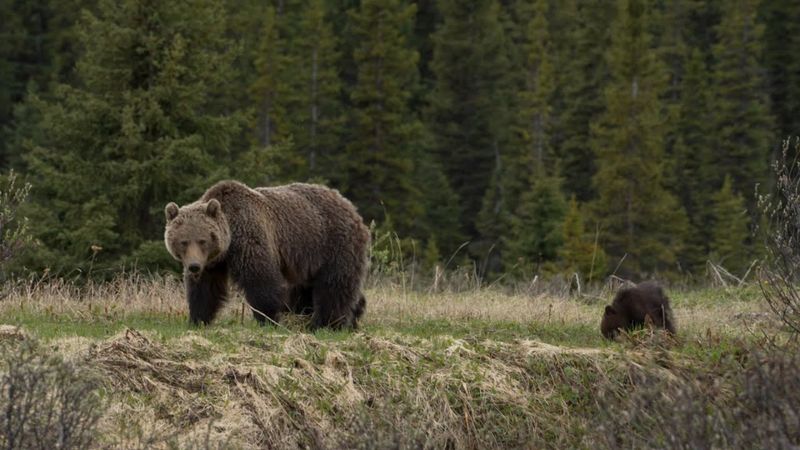
Yoho National Park, part of the Canadian Rockies, offers a rugged landscape ideal for grizzly bear sightings. The park’s dense forests and pristine rivers are favored habitats for these bears.
Visitors often spot bears along trails and water bodies, especially during the salmon run. The dramatic scenery, including waterfalls and rocky cliffs, adds to the excitement of wildlife viewing.
Guided tours and ranger programs provide education on bear safety and behavior, ensuring a memorable and respectful wildlife experience in this stunning national park.
Glacier Bay National Park, Alaska
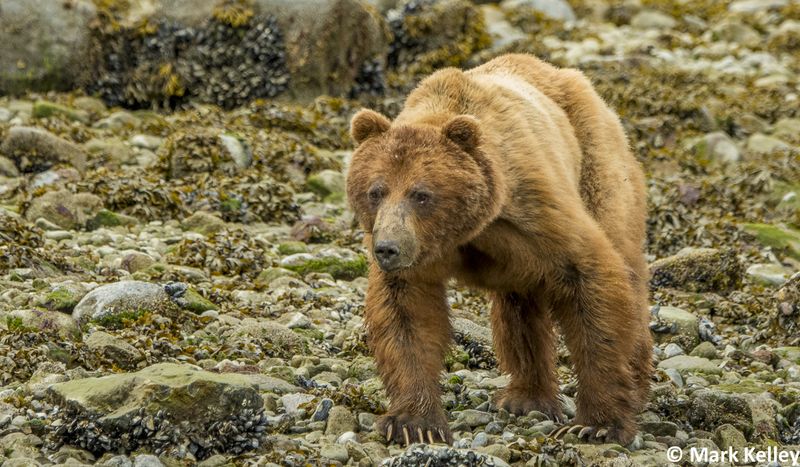
Glacier Bay National Park offers a dramatic setting for observing brown bears, with its icy landscapes and rich marine life. Bears are often seen fishing along the shoreline, providing a captivating display of their natural behaviors.
The park’s unique combination of glaciers and ocean views creates an unforgettable backdrop for bear watching. Visitors can take guided boat tours to get closer to the action while learning about the ecosystem.
Glacier Bay’s commitment to preservation ensures that the natural beauty and wildlife remain protected, offering a pristine environment for both bears and visitors.
Katmai Coast, Alaska
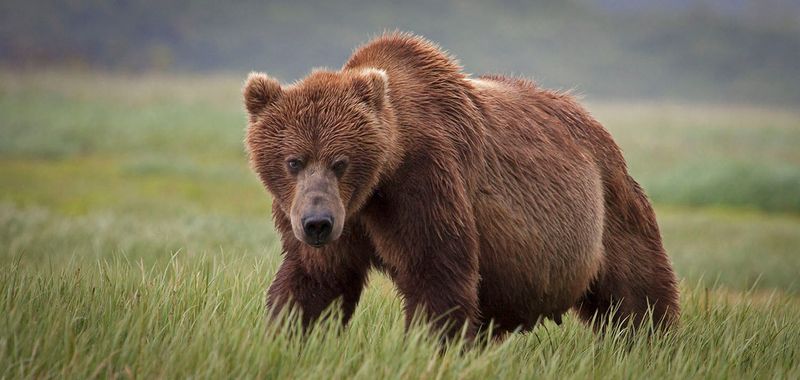
The Katmai Coast in Alaska provides an excellent opportunity to observe brown bears in their coastal habitat. The sandy shores and rocky cliffs make it a popular spot for bear watching.
Bears are often seen strolling along the beaches or fishing in the shallow waters, providing ample opportunities for photography and observation. The coastal scenery adds to the unique experience.
Guided tours enhance safety and offer insights into the behaviors and ecology of coastal brown bears, making it a must-visit destination for wildlife enthusiasts.
Brooks River, Katmai National Park, Alaska
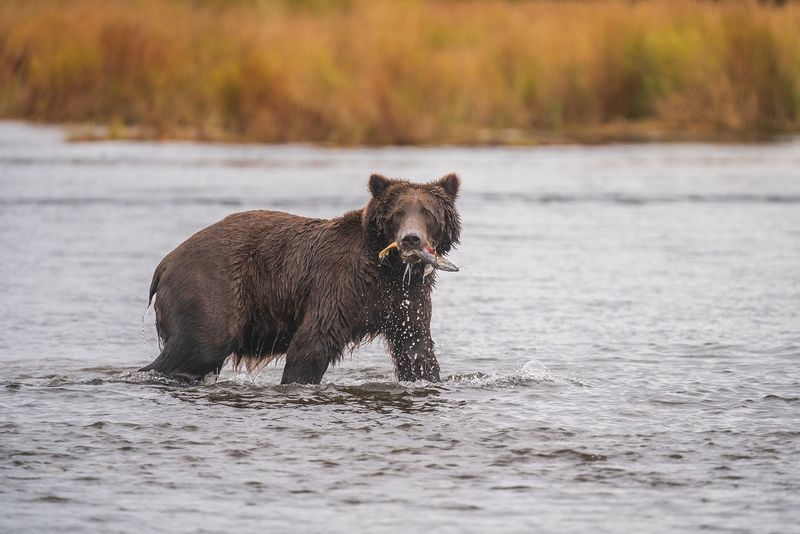
Brooks River in Katmai National Park is world-famous for its bear-watching opportunities, particularly during the salmon run. This location provides a front-row seat to observe bears catching salmon in mid-air.
The river’s clear waters and lush surroundings create an ideal setting for both bears and onlookers. Viewing platforms offer safe and unobtrusive vantage points for observing bear behaviors up close.
The park’s emphasis on conservation and education ensures that visitors leave with a deeper understanding of the intricate balance within this vibrant ecosystem.
Glendale Cove, Knight Inlet, British Columbia
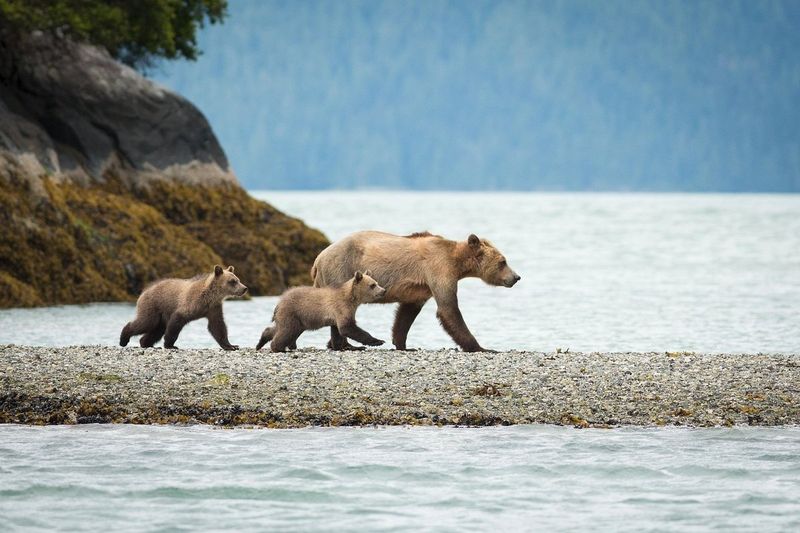
Glendale Cove, part of Knight Inlet, is a premier destination for observing grizzly bears. The cove’s lush surroundings and abundant salmon attract bears, creating a dynamic wildlife spectacle.
Visitors can watch grizzlies fish and forage, often from viewing platforms that ensure a respectful distance. The misty atmosphere and dense forests enhance the experience, making it a photographer’s delight.
Guided tours provide valuable insights into the ecosystem and bear conservation efforts, ensuring a comprehensive and respectful wildlife encounter.
Kluane National Park, Yukon
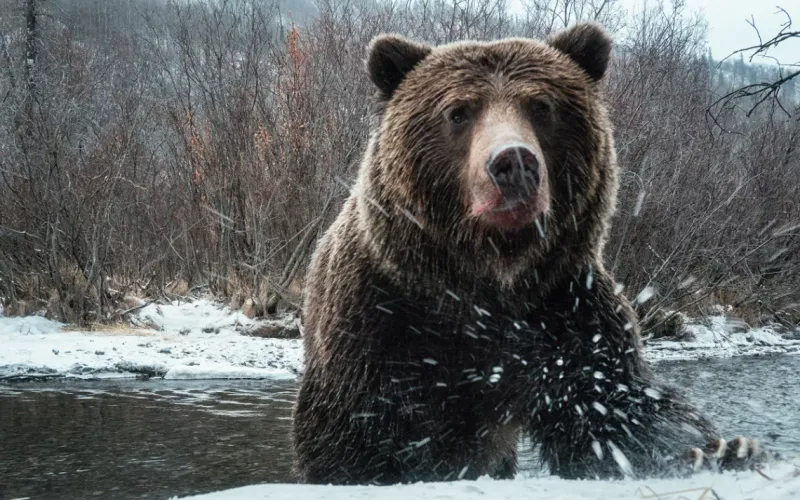
Kluane National Park in the Yukon offers vast wilderness where grizzly bears roam freely. The park’s expansive tundra and mountainous landscapes provide an awe-inspiring setting for bear watching.
Bears are often seen foraging in open fields or near water bodies, especially during the summer months. The park’s commitment to preserving natural habitats ensures a pristine environment for both bears and visitors.
Educational programs and guided tours enhance understanding of bear behaviors and the broader ecosystem, providing a rewarding experience for all who venture into Kluane.
Knight Inlet Lodge, British Columbia
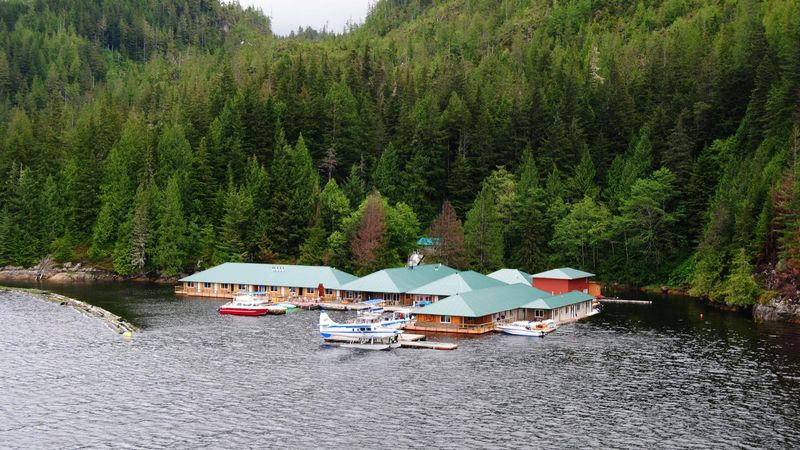
Knight Inlet Lodge offers an immersive experience for observing grizzly bears in their natural habitat. Located in the heart of British Columbia, the lodge provides guided tours to prime bear-watching locations.
Visitors can observe bears fishing and foraging, often from the comfort of secure viewing platforms. The inlet’s serene waters and misty mountains create an unforgettable backdrop.
The lodge emphasizes conservation and education, ensuring guests leave with a deeper appreciation for the ecosystem and the majestic grizzly bears.
Tahquamenon Falls State Park, Michigan
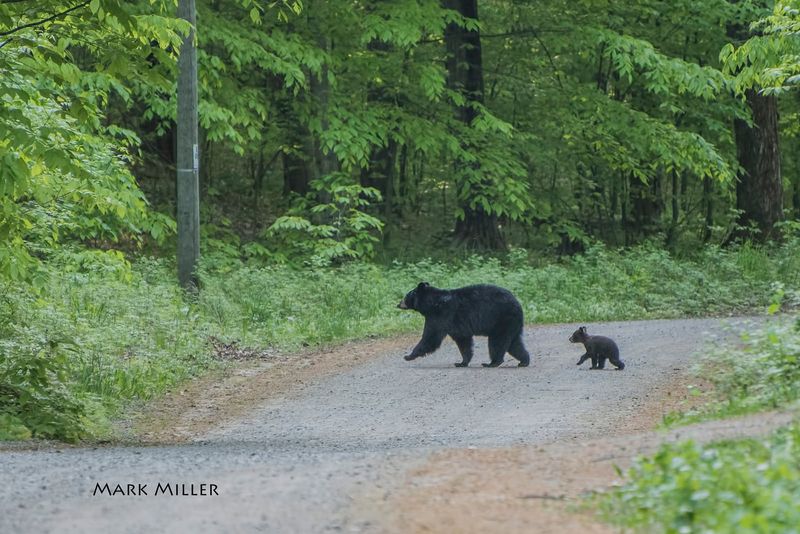
Tahquamenon Falls State Park in Michigan offers a beautiful setting for observing black bears. The park’s dense forests and cascading waterfalls create a picturesque environment for wildlife enthusiasts.
Bears are often spotted near water bodies and foraging in the forest, especially during the fall when the landscape is awash with vibrant colors. The park’s commitment to preserving natural habitats ensures a safe haven for wildlife.
Visitors can take advantage of numerous trails and viewing areas to observe bears in their natural setting, making it a must-visit destination for nature lovers.
Alligator River National Wildlife Refuge, North Carolina
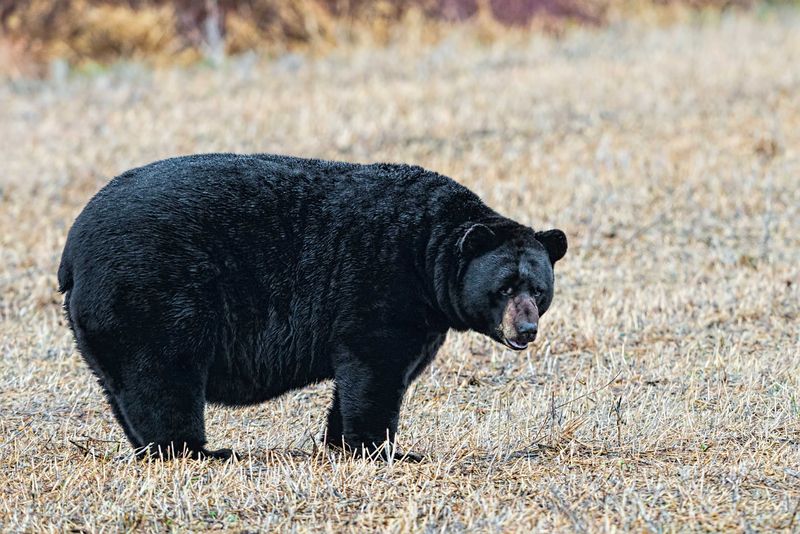
Alligator River National Wildlife Refuge in North Carolina offers a unique environment for observing black bears. The refuge’s marshes and forests provide a rich habitat for these animals.
Bears are frequently seen roaming the refuge, particularly near water sources. The diverse ecosystem supports a wide range of wildlife, making it an exciting destination for enthusiasts.
Guided tours and educational programs highlight the importance of conservation and offer insights into the bears’ behaviors and ecology, ensuring a rewarding wildlife experience for visitors.

